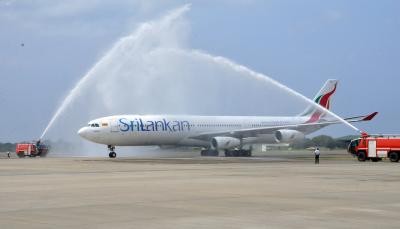
Colombo, Tourism has been a major source of forex for Sri Lanka. Prior to the pandemic, Sri Lanka's annual earnings from tourism had reached close to US$ 4.3 billion. The advent of the pandemic has reduced this to about US$ 500 million in 2021. This sharp decline has been one of the major factors in the current forex crisis.
It would be critical to revive this revenue stream as early as possible, especially because the inflows will be immediate and easily accessible.
Maldives adopted a very effective and innovative strategy to sustain tourism flows during the pandemic by focusing on the Indian market. It entered into an Air Bubble agreement with India as early as September 2020. This ensured relatively healthy tourist arrivals mainly comprising Indian tourists throughout the pandemic period. Helped by the rebound in the tourism sector, Maldives has managed to achieve healthy growth rates unlike Sri Lanka.
As in Maldives, India has been the largest source of tourists for Sri Lanka. In 2019, nearly 3,55,000 tourists from India visited Sri Lanka. This trend has continued since the reopening of tourist travel by Sri Lanka. In 2021, 29 per cent of the total tourist arrivals to Sri Lanka comprised visitors from India. In the first quarter of 2022, the Indian tourists once again constituted the largest group out of a total of 56,389 arrivals.
However, there was little visible effort by Sri Lanka to tap into the Indian market or create a special dispensation for the Indian tourists during the pandemic or after it. There seems to be some effort now to try and open new routes to enable greater tourist flows from India. One such initiative is the proposed resumption of Chennai-Jaffna flights. This could be supplemented by the initiation of the ferry services between India and Sri Lanka and starting with services between KKS and Karaikal. There have been recent announcements regarding cabinet approvals for both. These are steps in the right direction and need to be implemented quickly and decisively.
With the moderation of global tourist flows and competition among destinations for attracting a limited number of international travellers, it is imperative that Sri Lanka goes beyond the usual tourism promotion and focuses upon creating world class facilities and infrastructure for tourists. However, it is evident that the government can do little in this regard due to the constraints it faces as a result of the current economic crisis. Therefore, it will be critical to be able to utilize the private sector or external funding to help maintain and further develop facilities such as airports which are an important consideration for every tourist.
For instance, the Bandaranaike International Airport at Colombo is one of the most important entry points for tourists and requires constant upkeep as well as expansion for the future. Privatisation of this airport would not only help deliver better services for users, but also reduce the financial burden on GoSL while ensuring steady revenue in the form of royalties and profit sharing.
Investment from India in the BIA appears a logical and natural choice in view of the fact that it is the largest source of tourists for Sri Lanka and also has entities which are well versed in development and management of similar airports. This would have a beneficial effect not only for the tourist arrivals from India but for the overall economic partnership and would be mutually advantageous.
This would also ensure that Sri Lanka would be embarking upon investment based solutions in a sector of priority with its closest neighbour and largest trading partner.
Investment driven solutions are not only sustainable and beneficial in the long run but also enable the development of the synergies in allied areas.


.jpeg)

